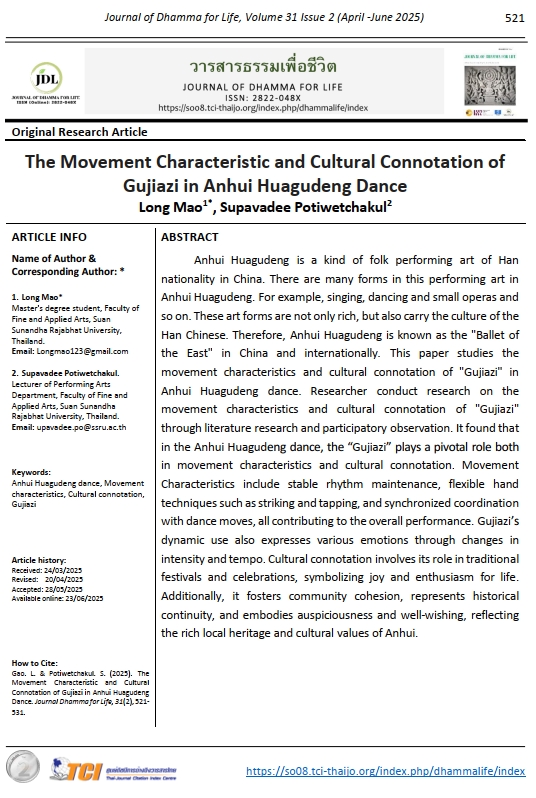The Movement Characteristic and Cultural Connotation of Gujiazi in Anhui Huagudeng Dance
Main Article Content
Abstract
Anhui Huagudeng is a kind of folk performing art of Han nationality in China. There are many forms in this performing art in Anhui Huagudeng. For example, singing, dancing and small operas and so on. These art forms are not only rich, but also carry the culture of the Han Chinese. Therefore, Anhui Huagudeng is known as the "Ballet of the East" in China and internationally. This paper studies the movement characteristics and cultural connotation of "Gujiazi" in Anhui Huagudeng dance. Researcher conduct research on the movement characteristics and cultural connotation of "Gujiazi" through literature research and participatory observation. It found that in the Anhui Huagudeng dance, the “Gujiazi” plays a pivotal role both in movement characteristics and cultural connotation. Movement Characteristics include stable rhythm maintenance, flexible hand techniques such as striking and tapping, and synchronized coordination with dance moves, all contributing to the overall performance. Gujiazi’s dynamic use also expresses various emotions through changes in intensity and tempo. Cultural connotation involves its role in traditional festivals and celebrations, symbolizing joy and enthusiasm for life. Additionally, it fosters community cohesion, represents historical continuity, and embodies auspiciousness and well-wishing, reflecting the rich local heritage and cultural values of Anhui.


